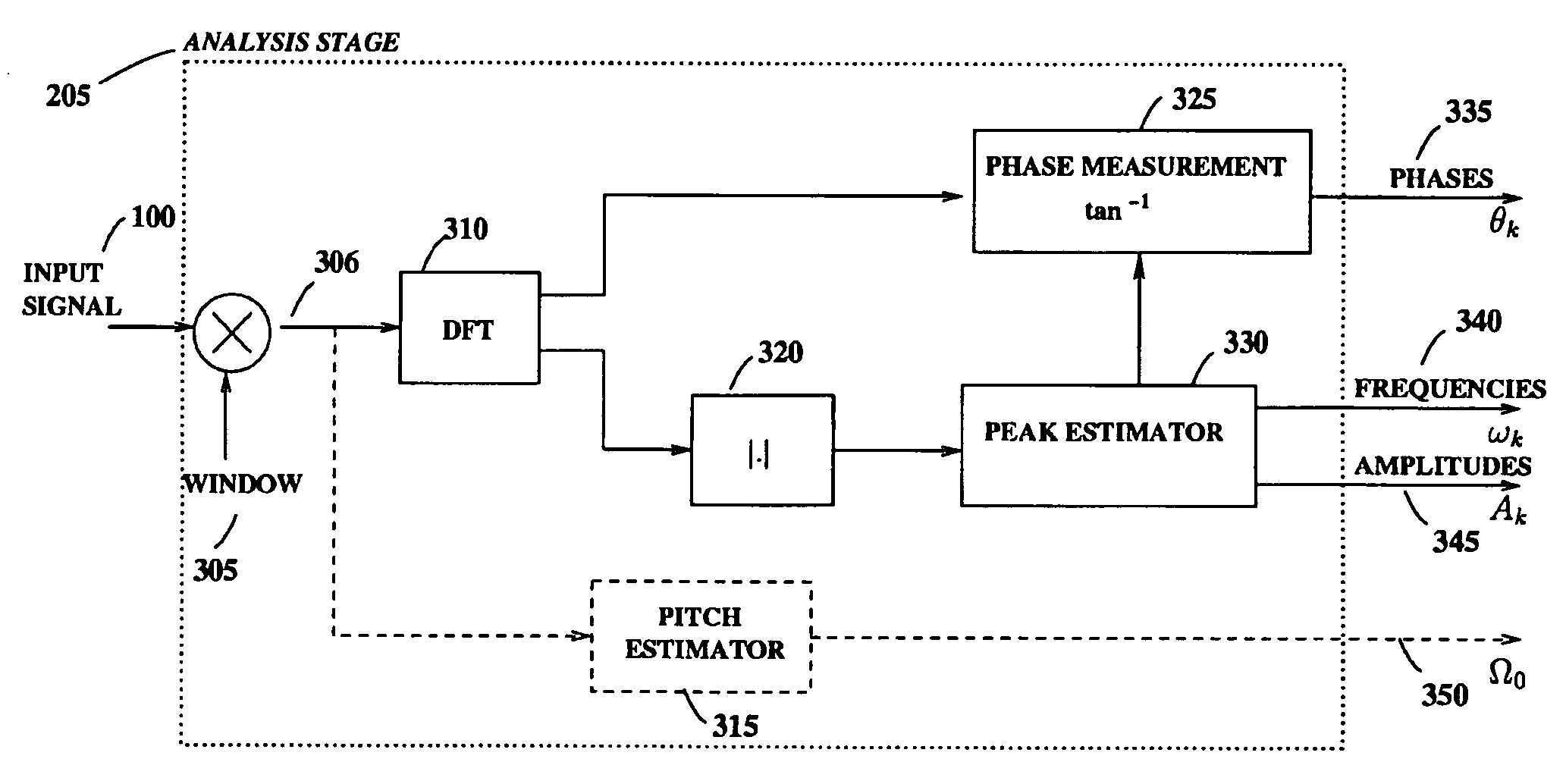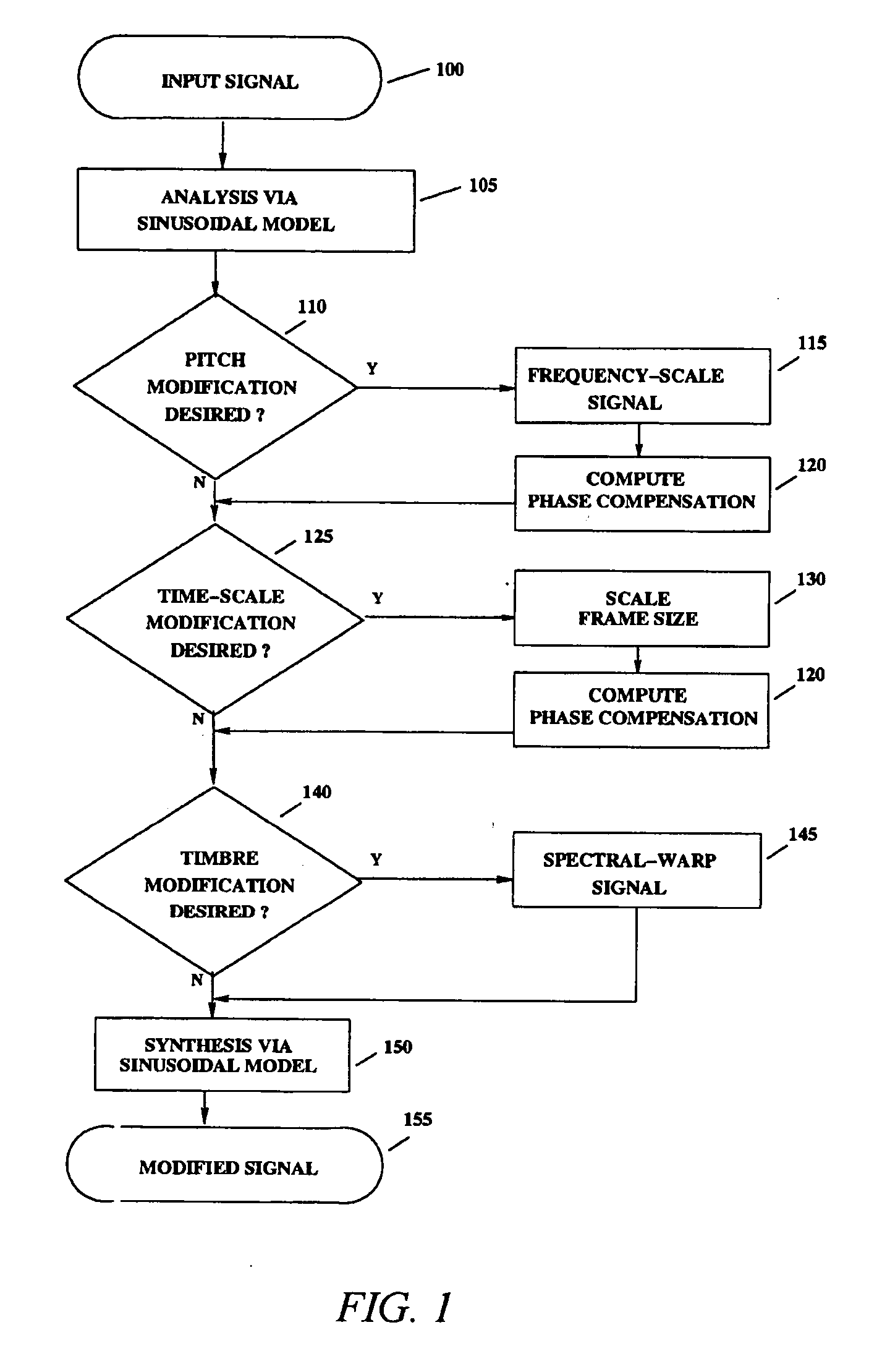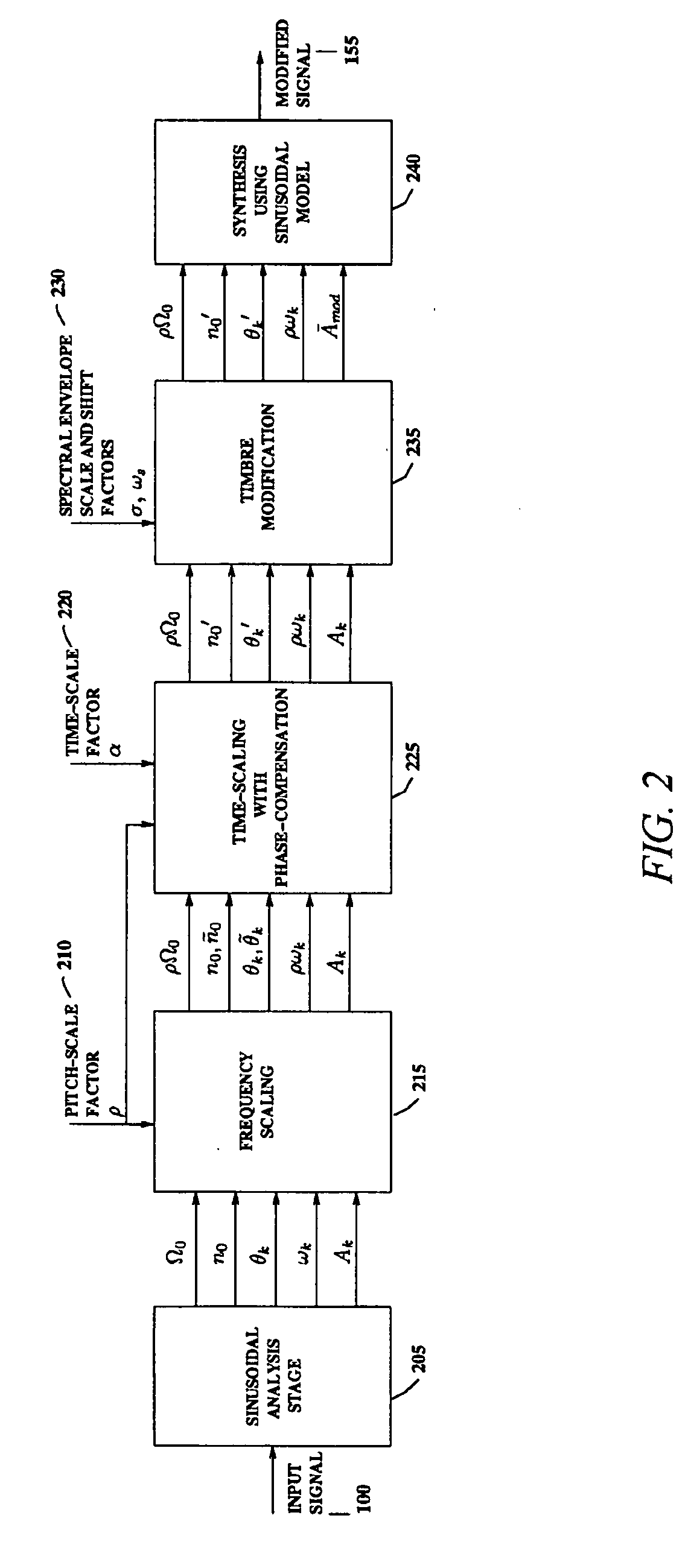Modification of acoustic signals using sinusoidal analysis and synthesis
a technology of sinusoidal analysis and acoustic signals, applied in the field of modification of acoustic signals using sinusoidal analysis and synthesis, can solve the problems of lowering the pitch, and reducing the overall duration, so as to achieve more realistic modification of speech
- Summary
- Abstract
- Description
- Claims
- Application Information
AI Technical Summary
Benefits of technology
Problems solved by technology
Method used
Image
Examples
Embodiment Construction
A description of preferred embodiments of the invention follows.
The present invention provides a system and method of modifying an acoustic waveform. In the preferred embodiments, the system and method generates a synthesized pitch-scaled version of an original acoustic waveform independent of time-scaling and timbre modification of the original waveform, if any.
In the following sections, the basic sinusoidal analysis and synthesis system is reviewed, and a representation suitable for the modification of acoustic waveforms is developed. Afterwards, the equations for sinusoidal-model-based time scaling and pitch scaling are derived. A scheme to ensure phase coherence across frame boundaries in a modified model is also derived. These modification techniques are typically applied to a speech signal, but they also apply to non-speech audio signals. A technique for correction and modification of timbre via manipulation of model parameters is also specified.
FIG. 1 is the overall decis...
PUM
 Login to View More
Login to View More Abstract
Description
Claims
Application Information
 Login to View More
Login to View More - R&D
- Intellectual Property
- Life Sciences
- Materials
- Tech Scout
- Unparalleled Data Quality
- Higher Quality Content
- 60% Fewer Hallucinations
Browse by: Latest US Patents, China's latest patents, Technical Efficacy Thesaurus, Application Domain, Technology Topic, Popular Technical Reports.
© 2025 PatSnap. All rights reserved.Legal|Privacy policy|Modern Slavery Act Transparency Statement|Sitemap|About US| Contact US: help@patsnap.com



